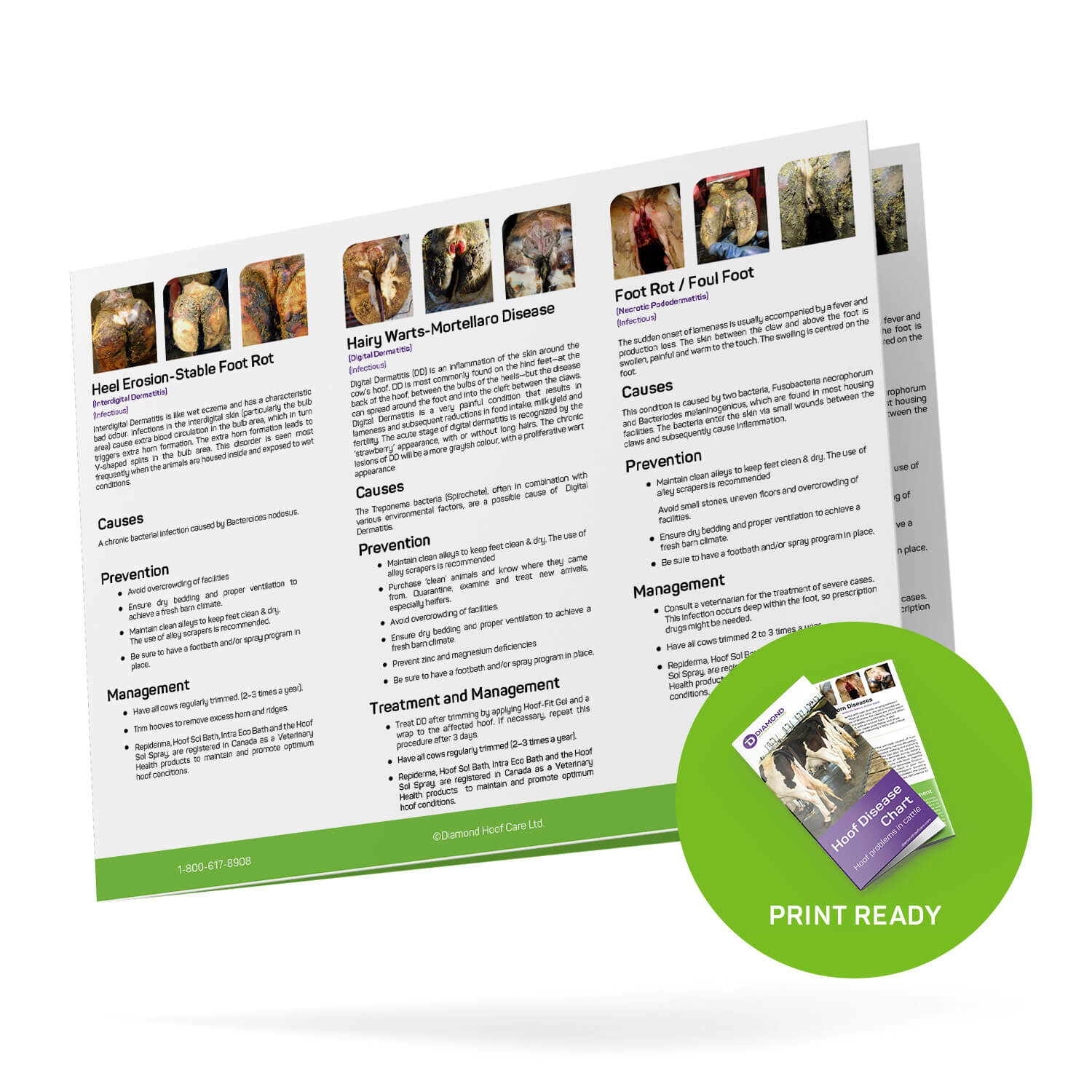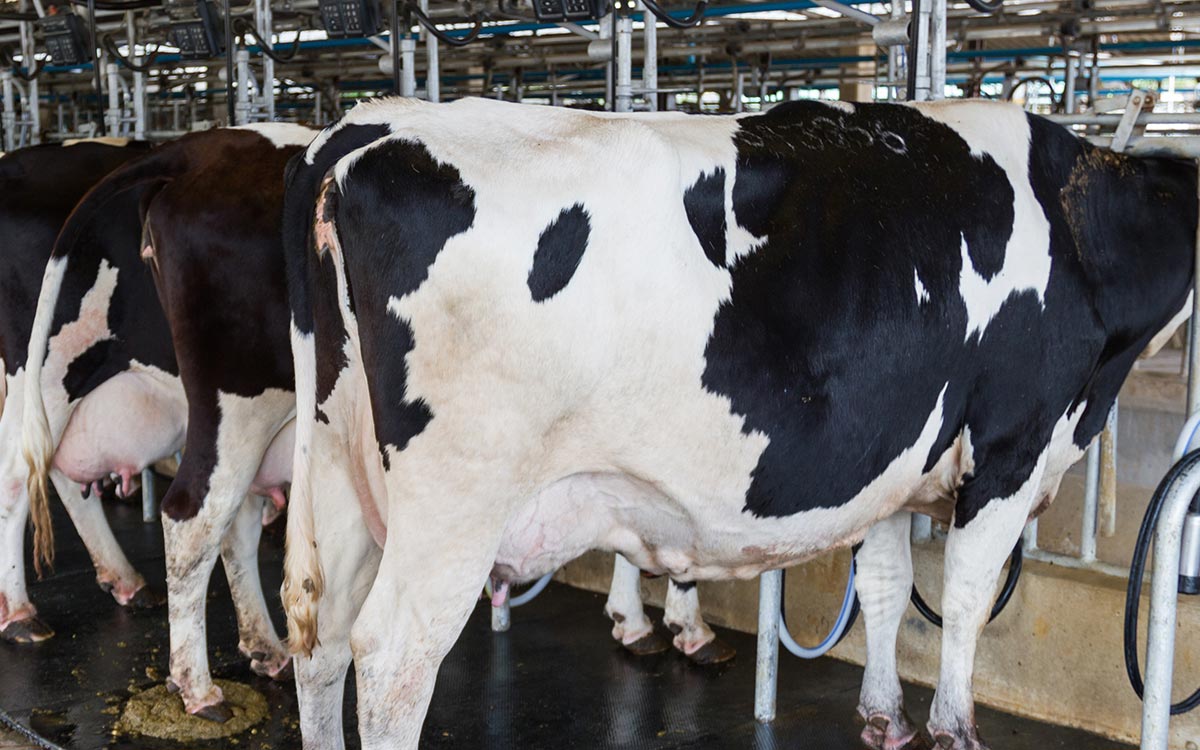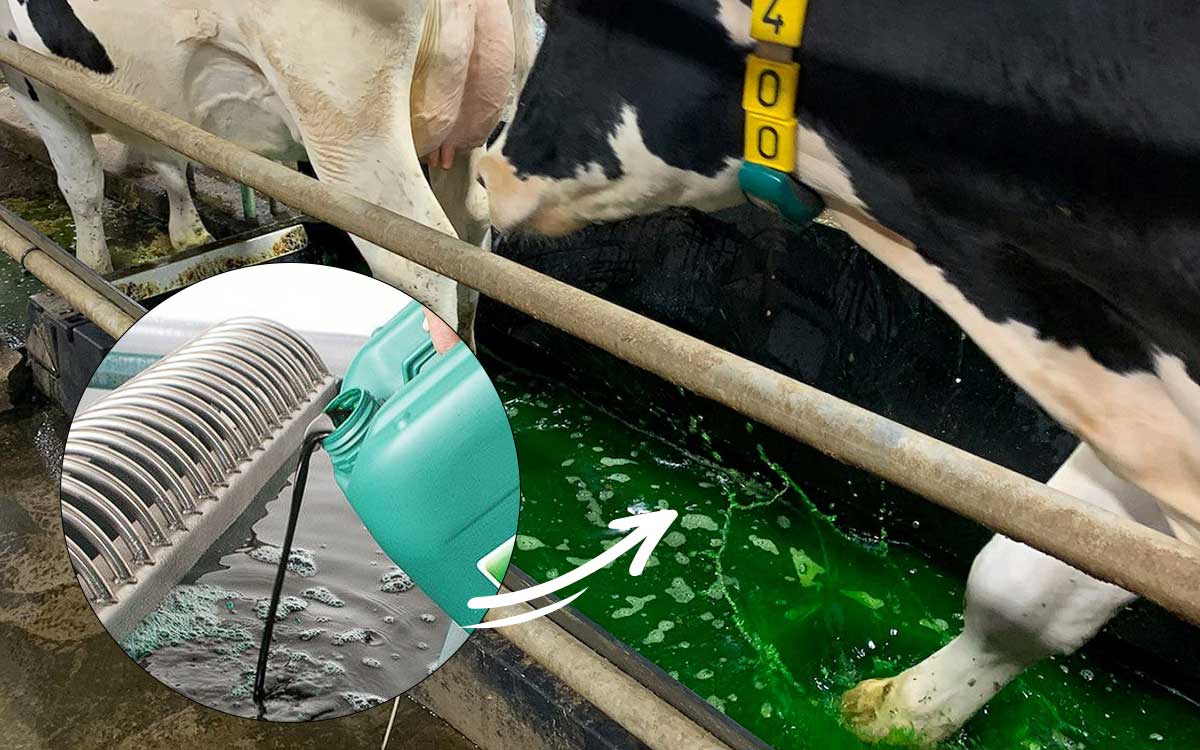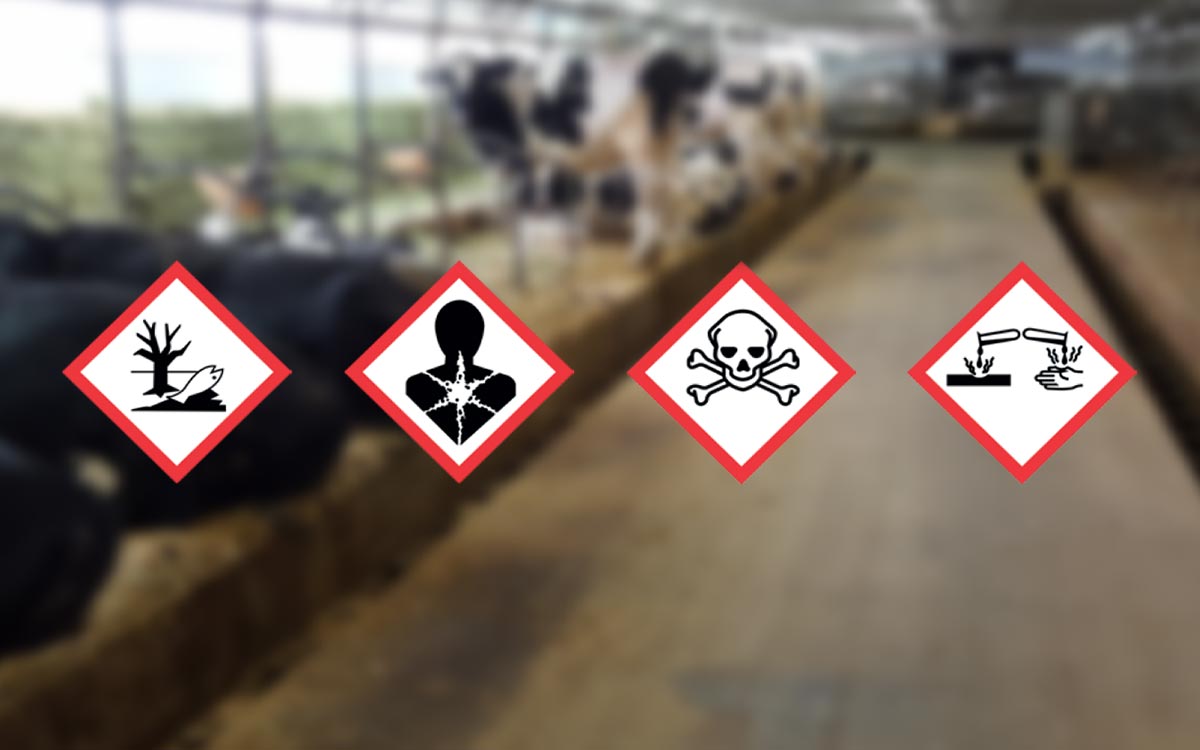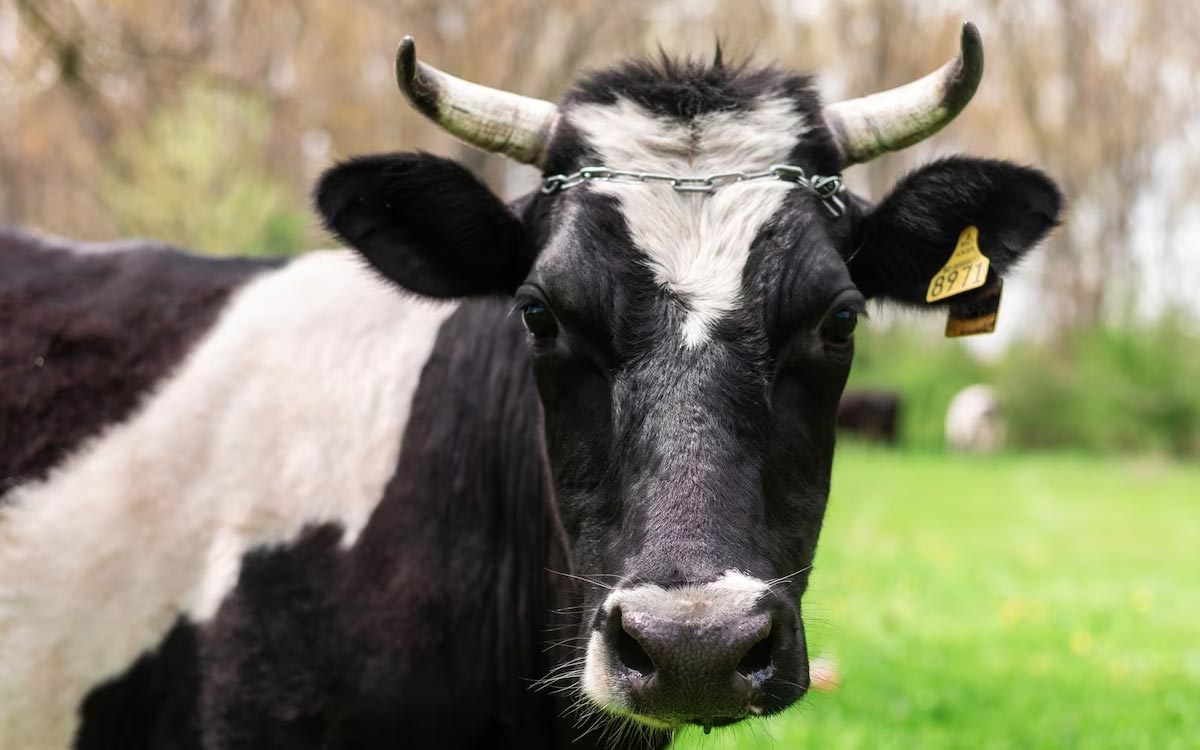It can be troubling for North American livestock owners to observe the skin of their cows sloughing off. This is usually indicative of cattle skin diseases, but which one is it?
Photosensitization is a typical cause of cow skin peeling off, making the animals more sensitive to ultraviolet (UV) light. The peeling of the skin occurs in the advanced stages of photosensitization. This condition can be triggered by certain chemical compounds or agents and liver damage.
Besides photosensitization, several other diseases and conditions can affect cow skin and cause it to peel and slough off. Read on to discover more about them.
1. Photosensitization
Photosensitization makes animals more sensitive or susceptible to UV light. As the condition progresses, it may lead to the skin peeling or sloughing.
This condition results from photodynamic agents in cattle, horses, sheep, goats, and other livestock. Specifically, the photons in UV light react with the agents and release free radicals, which affect the cells.
Affected animals are often kept in dark shelters to prevent their exposure to harmful and irritating UV rays.
![[B207]-6-Things-That-Could-Cause-Cow-Skin-To-Peel-Off-infograph](http://cdn-5d2e57e3f911c80ef4a235f4.closte.com/wp-content/uploads/2022/11/B207-6-Things-That-Could-Cause-Cow-Skin-To-Peel-Off-infograph.jpg.webp)
![[B207]-6-Things-That-Could-Cause-Cow-Skin-To-Peel-Off-infograph-2 (1)](http://cdn-5d2e57e3f911c80ef4a235f4.closte.com/wp-content/uploads/2022/11/B207-6-Things-That-Could-Cause-Cow-Skin-To-Peel-Off-infograph-2-1.jpg.webp)
There are different types of photosensitization.
- Primary (Type I). This one occurs when cows ingest photodynamic agents. There are plants that, when eaten, cause Type I photosensitization, among them, being bishop’s weed and alfalfa.
- Aberrant endogenous pigment synthesis (Type II). The catalyst for this type is the production of photosensitizing pigments. The presence of defective enzymes may lead to such production.
- Hepatogenous or secondary (Type III). This type occurs when there is liver damage or abnormal liver metabolism. Metabolic problems lead to the accumulation of phylloerythrin and other photodynamic agents.
- Idiopathic (Type IV). This type has no specific or apparent cause.
Photosensitization may be indicative or symptomatic of other health issues, such as facial eczema. This condition involves the accumulation of chlorophyll, which leads to Type III (or secondary) photosensitization.
2. Ringworm (Dermatophytosis)
Another common skin condition among cattle is ringworm, or dermatophytosis, which is caused by various fungal species. It’s characterized by the emergence of lesions, which may lead to peeling cow skin through scaling.
Furthermore, zoonotic transmission (infection spreading from cattle to humans) is possible through direct contact. The fungus Trichophyton verrucosum is typically the culprit in infections affecting cows and humans.
Young stock is more prone to ringworm, especially if older cows have already been exposed to it. Poor nutrition, diseases, immunosuppression, and a hot, humid environment increase the risk. As a hoof trimmer, visiting different farms and housing facilities, I have often seen ringworm in young stock housed inside a poorly ventilated barn.
Vaccination and disinfection of cow shelters help prevent the proliferation of ringworm. Containing the disease is crucial. Otherwise, it will be harder to treat a sizeable infected herd. Caring for skin condition challenges has been done with Hoof Sol Spray and Repiderma.
3. Facial Eczema
As mentioned, photosensitization may be a symptom of another condition. An example is facial eczema, which is caused by a fungal toxin called sporidesmin.
Cows with facial eczema may demonstrate secondary (Type III) photosensitization. When ingested, sporidesmin causes liver damage. This, in turn, leads to metabolic damage: The animal becomes unable to process chlorophyll, leading to the pigment accumulating. Chlorophyll is a photosensitive agent and would react with UV light, causing skin and cell damage.
If the condition is left unchecked, this would result in the skin peeling or sloughing off.
4. Lumpy Skin Disease
Lumpy skin disease (LSD) is a condition in cattle closely monitored by nations because of its effects and transmission. This viral disease (caused by poxvirus) began to spread worldwide in 2019.
Its primary symptom and effect is the appearance of skin nodules; they consist of skin, tissue, and even muscle. Thus, when these nodules become necrotic or die, they could slough or peel off, leaving a hole vulnerable to infection.
The method of transmission is determined to be mainly mechanical, through insect vectors such as ticks. However, inanimate objects such as needles may also lead to the transference of the disease.
Pseudo-Lumpy Skin Disease
There’s a cattle condition similar to LSD called pseudo-lumpy skin disease. However, pseudo-LSD is considered milder and less significant.
Skin lesions are also formed, although they only involve the epidermis layer. LSD can extend to the muscles. When the affected skin sloughs off, a scab forms. The formation of new skin can take two weeks.
Like LSD, pseudo-LSD is also caused by a virus, in this case, bovine herpesvirus 2. When limited to the cow’s udder, the disease is called bovine ulcerative mammillitis.
5. Teat Frostbite
Frostbite on the animal’s teats is a concern for livestock owners during the cold seasons. It causes the udder skin to swell, chap, and, in worse cases, slough or peel off.
It can take up to two months (60 days) for frostbite damage to heal. Milking the cow too early can cause the damage to return. Thus, the prevention of teat frostbite is crucial.
These are ways to prevent teat frostbite:
- Dipping. Teats are dipped in an emollient-containing solution to protect them in winter. Skin conditioners are ideal emollients. After dipping, owners must ensure the teats are dry because wet skin is more susceptible to frostbite.
- Maintaining an ideal temperature. Livestock owners should inspect any damage in their cow housing before the winter and have it repaired immediately. Damaged walls and inefficient seals allow cold air to enter and reduce the temperature, leading to frostbite.
- Curtains. Installing good curtains helps keep the cows warm inside their shelter.
- Avoid drying off cows. Drying off a dairy cow and putting her outside in winter weather is not recommended. These dry cows often leak milk after dry-off, and freezing temperatures could cause frostbite.
- Nursing cows. A nursing cow could get frostbite after her calf has been sucked and the teat is still moist.
6. Horn Flies (Stephanofilariasis)
Besides transmitting diseases such as LSD, insects themselves cause harm to cow skin. Horn flies were named so because of their predisposition for gathering at the base of cattle horns.
Horn flies feed on cattle skin by puncturing it to suck blood. They will feed 30 to 40 times a day, leading to extensive hide or skin damage over time.
While the horn flies feed, they also transmit a parasite or worm that causes Stephanofilariasis. This forces cows to scratch, resulting in the scraping or peeling of the skin.
Fly control is a must to avoid a fly pandemic on a farm. Try to break the breeding cycle of the flies by cleaning the stray pack on manure areas.
